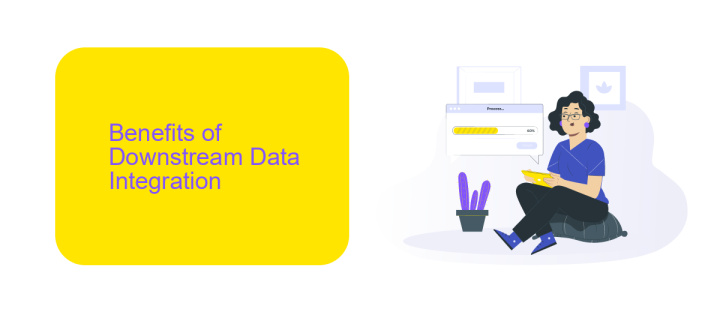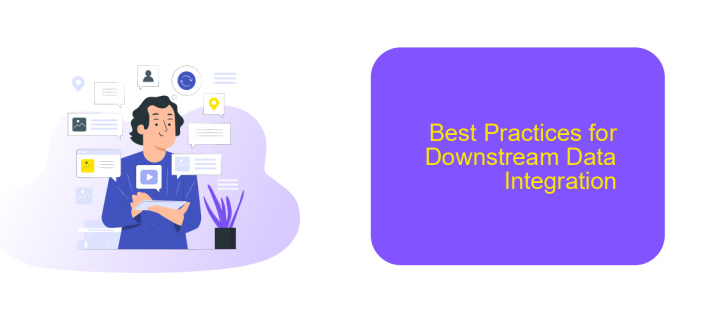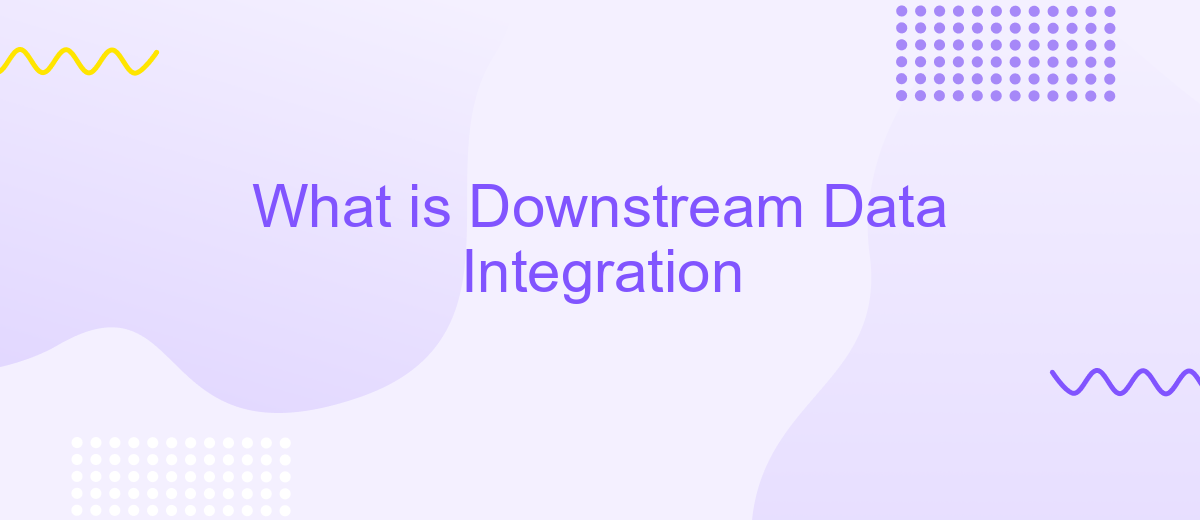What is Downstream Data Integration
Downstream data integration refers to the process of consolidating and harmonizing data from various sources to ensure seamless data flow and usability across an organization. This crucial step in data management enhances decision-making, improves operational efficiency, and supports advanced analytics. In this article, we will explore the key concepts, benefits, and best practices associated with downstream data integration.
Introduction to Downstream Data Integration
Downstream data integration refers to the process of consolidating data from various sources into a unified system for better analysis and decision-making. This integration is crucial for businesses to maintain data consistency, improve operational efficiency, and gain valuable insights from disparate data sets.
- Enhances data accuracy and consistency
- Streamlines data management processes
- Facilitates better decision-making through comprehensive data analysis
- Reduces data silos and improves accessibility
One effective tool for implementing downstream data integration is ApiX-Drive. This service simplifies the process by allowing seamless connections between different data sources and applications. With ApiX-Drive, businesses can automate data transfers, ensuring that all relevant information is up-to-date and readily available for analysis. By leveraging such tools, companies can optimize their data workflows and drive more informed business strategies.
Benefits of Downstream Data Integration

Downstream data integration offers numerous benefits, including enhanced data accuracy and consistency across various systems. By integrating data from multiple sources, organizations can ensure that their information is up-to-date and reliable. This integration minimizes the risk of data discrepancies and errors, which can lead to more informed decision-making and improved operational efficiency. Furthermore, it allows for real-time data updates, ensuring that all departments within an organization have access to the latest information.
Another significant advantage of downstream data integration is the reduction in manual data entry and associated labor costs. Automated integration processes, such as those facilitated by services like ApiX-Drive, streamline data transfer and synchronization between different platforms. This not only saves time but also reduces the likelihood of human error. Additionally, such integration enables better scalability, allowing businesses to grow and adapt their data infrastructure without significant overhauls. Overall, downstream data integration supports a more cohesive and efficient data management strategy, driving better business outcomes.
Challenges of Downstream Data Integration

Downstream data integration presents a variety of challenges that organizations must address to ensure seamless data flow and accuracy. One of the primary issues is data inconsistency, where different systems might have conflicting data formats, leading to errors and inefficiencies.
- Data Inconsistency: Different systems may store data in various formats, causing mismatches and errors during integration.
- Latency Issues: Real-time data integration requires robust infrastructure to minimize delays, which can be costly and complex to implement.
- Scalability: As the volume of data grows, maintaining efficient integration processes becomes increasingly difficult.
- Security Concerns: Ensuring data privacy and compliance with regulations during integration is a critical challenge.
- Technical Complexity: Integrating multiple data sources often requires specialized knowledge and tools, which can be resource-intensive.
Services like ApiX-Drive can help mitigate some of these challenges by providing a platform that simplifies the integration process. With its user-friendly interface and robust features, ApiX-Drive allows organizations to automate data flows between various systems, ensuring data consistency and reducing latency. By leveraging such tools, businesses can focus on their core activities while maintaining efficient and secure data integration processes.
Best Practices for Downstream Data Integration

Effective downstream data integration is crucial for ensuring seamless data flow and maximizing the utility of your data assets. To achieve optimal results, it is essential to follow certain best practices that can enhance the efficiency and reliability of your data integration processes.
One of the key practices is to establish clear data governance policies. This involves defining data ownership, data quality standards, and access controls to ensure that data is accurate, consistent, and secure. Additionally, leveraging automated tools like ApiX-Drive can streamline the integration process, reducing manual effort and minimizing errors.
- Ensure data consistency by implementing robust validation rules.
- Regularly monitor and audit data flows to detect and resolve issues promptly.
- Utilize scalable integration solutions to accommodate growing data volumes.
- Implement data transformation processes to standardize data formats across systems.
By adhering to these best practices, organizations can enhance their downstream data integration efforts, resulting in improved data accessibility and better decision-making capabilities. Tools like ApiX-Drive can further facilitate these practices by providing a user-friendly platform for automating and managing data integrations efficiently.
- Automate the work of an online store or landing
- Empower through integration
- Don't spend money on programmers and integrators
- Save time by automating routine tasks
Conclusion
In summary, downstream data integration plays a crucial role in ensuring that data flows seamlessly across various systems within an organization. By effectively managing and integrating data from multiple sources, businesses can enhance their decision-making processes, improve operational efficiency, and gain a competitive edge. The integration process involves several stages, including data extraction, transformation, and loading, each of which must be meticulously executed to maintain data integrity and accuracy.
Utilizing advanced tools and services, such as ApiX-Drive, can significantly streamline the setup and management of these integrations. ApiX-Drive offers a user-friendly platform that automates data transfer between various applications, reducing the need for manual intervention and minimizing errors. By leveraging such solutions, organizations can ensure that their data integration processes are not only efficient but also scalable, allowing them to adapt to evolving business needs and technological advancements. Ultimately, successful downstream data integration empowers businesses to make informed decisions based on comprehensive, accurate, and timely data.
FAQ
What is Downstream Data Integration?
Why is Downstream Data Integration important?
What are the common challenges in Downstream Data Integration?
How can I automate Downstream Data Integration?
What tools can help with Downstream Data Integration?
Time is the most valuable resource for business today. Almost half of it is wasted on routine tasks. Your employees are constantly forced to perform monotonous tasks that are difficult to classify as important and specialized. You can leave everything as it is by hiring additional employees, or you can automate most of the business processes using the ApiX-Drive online connector to get rid of unnecessary time and money expenses once and for all. The choice is yours!


